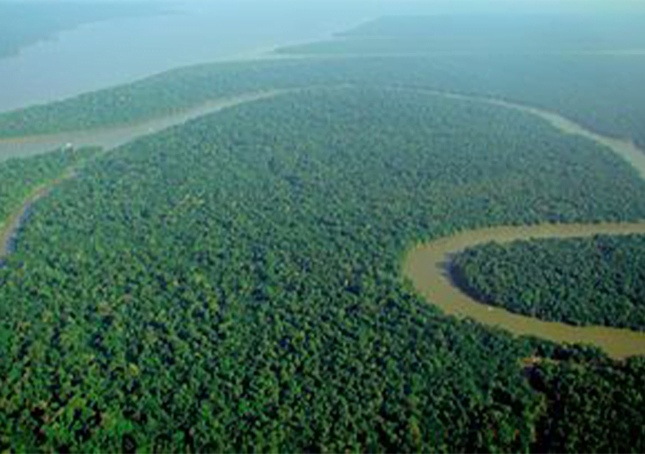Tropical rainforest

Tropical rainforests are rainforests that occur in areas of tropical rainforest climate in which there is no dry season – all months have an average precipitation of at least 60 mm – and may also be referred to as lowland equatorial evergreen rainforest.
True rainforests are typically found between 10 degrees north and south of the equator (see map); they are a sub-set of the tropical forest biome that occurs roughly within the 28-degree latitudes (in the equatorial zone between the Tropic of Cancer and Tropic of Capricorn).
Within the World Wildlife Fund’s biome classification, tropical rainforests are a type of tropical moist broadleaf forest (or tropical wet forest) that also includes the more extensive seasonal tropical forests.
Tropical rainforests can be characterized in two words: hot and wet. Mean monthly temperatures exceed 18 °C (64 °F) during all months of the year.[4] Average annual rainfall is no less than 1,680 mm (66 in) and can exceed 10 m (390 in) although it typically lies between 1,750 mm (69 in) and 3,000 mm (120 in). This high level of precipitation often results in poor soils due to leaching of soluble nutrients in the ground.
Tropical rainforests exhibit high levels of biodiversity. Around 40% to 75% of all biotic species are indigenous to the rainforests. Rainforests are home to half of all the living animal and plant species on the planet. Two-thirds of all flowering plants can be found in rainforests. A single hectare of rainforest may contain 42,000 different species of insect, up to 807 trees of 313 species and 1,500 species of higher plants.
Tropical rainforests have been called the “world’s largest pharmacy”, because over one quarter of natural medicines have been discovered within them. It is likely that there may be many millions of species of plants, insects and microorganisms still undiscovered in tropical rainforests.
Tropical rainforests are among the most threatened ecosystems globally due to large-scale fragmentation as a result of human activity. Habitat fragmentation caused by geological processes such as volcanism and climate change occurred in the past, and have been identified as important drivers of speciation.
However, fast human driven habitat destruction is suspected to be one of the major causes of species extinction. Tropical rain forests have been subjected to heavy logging and agricultural clearance throughout the 20th century, and the area covered by rainforests around the world is rapidly shrinking.
